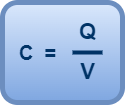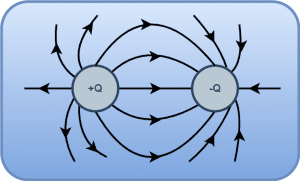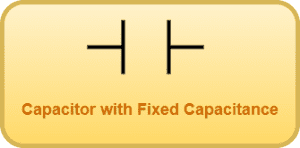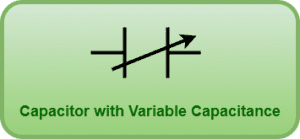Electrical Capacitance of A Conductor-
Before you go through this article, make sure that you have gone through the previous article on Electrical Capacitance of a Conductor.
We have learnt-
- The electrical capacitance of a conductor is a measure of its ability to store electric charge or energy.
- It depends on the shape and size of the conductor.
- Its SI unit is farad (F).
If charge Q raises the potential of a conductor by V, then its electrical capacitance is given by the formula-

In this article, we will learn about the capacitor.
Capacitor-
| A capacitor is an arrangement of two conductors of any shape separated by a non-conducting medium (insulator or dielectric) such that it can store electric charge. |
It is also called as a condenser.
Charging Of Capacitor-
When a battery is connected across the two uncharged conductors of the capacitor,
- Electrons from one conductor starts to get transferred to the other conductor.
- Equal and opposite charges start appearing on the two conductors.
- The potential difference between the two conductors increases.
- Electric field comes into existence between the two conductors.
- The electric field increases with the charge on capacitor.
This process is called as charging of capacitor.

At any instant, the charge on the capacitor is directly proportional to the potential difference across the capacitor i.e.

It may be noted that-
- Charge on Capacitor = magnitude of charge on either conductor
- Potential difference across capacitor = Potential difference between the two conductors
We write-

where C is a constant of proportionality called as Capacitance of Capacitor.
Capacitance Of Capacitor-
From the relation Q = CV, the capacitance of capacitor is given by-

Thus, the capacitance of a capacitor is defined as the ratio of the magnitude of charge Q on the capacitor to the potential difference across the capacitor.
Steady State-
| A capacitor is said to be in steady state when it is fully charged i.e. the charging process has completed. |
The charging process completes when the potential difference across the capacitor becomes equal to the potential difference across the battery.
It may be noted that in steady state,
- Potential difference across the capacitor = potential difference across the battery
- Charge on capacitor becomes constant and given by Q = CV where V is the voltage applied.
Pictorial Symbols-
A capacitor of fixed capacitance is represented by the symbol-

A capacitor of variable capacitance is represented by the symbol-

Types of Capacitors-
Generally, capacitors are named on the basis of the shape of the conductors used i.e.
- Parallel Plate Capacitor
- Spherical Capacitor
- Cylindrical Capacitor
Uses of Capacitor-
Capacitors are widely used in-
- electrical appliances such as fans, motors, voltage correctors etc.
- electronic instruments, appliances, radio sets, television sets, computers etc.
Read the next article on-
Get more notes & other study material of the Chapter Electrostatic Potential & Capacitance.

